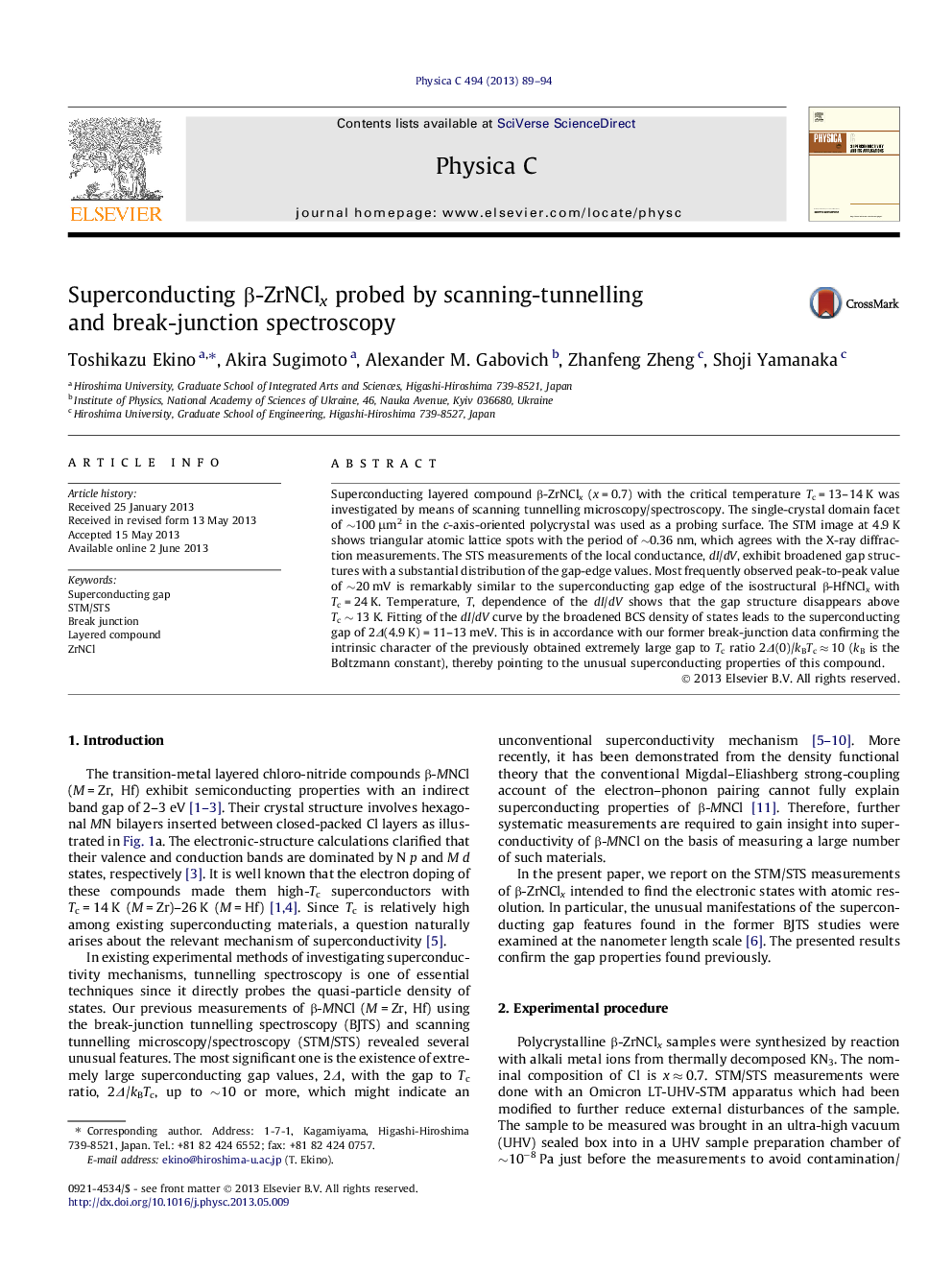| Article ID | Journal | Published Year | Pages | File Type |
|---|---|---|---|---|
| 1817828 | Physica C: Superconductivity and its Applications | 2013 | 6 Pages |
•STM/STS combined with break-junction tunnelling spectroscopy (BJTS) on β-ZrNCl.•STM image on the ab plane shows triangular atomic lattice spots with a period of 0.36 nm.•The gap peaks are widely distributed (Δp–p = 9–28 meV)over the area of 100 nm2.•Average gap ratio 2Δ/kBTc ∼ 10 is confirmed by both STS and BJTS.
Superconducting layered compound β-ZrNClx (x = 0.7) with the critical temperature Tc = 13–14 K was investigated by means of scanning tunnelling microscopy/spectroscopy. The single-crystal domain facet of ∼100 μm2 in the c-axis-oriented polycrystal was used as a probing surface. The STM image at 4.9 K shows triangular atomic lattice spots with the period of ∼0.36 nm, which agrees with the X-ray diffraction measurements. The STS measurements of the local conductance, dI/dV, exhibit broadened gap structures with a substantial distribution of the gap-edge values. Most frequently observed peak-to-peak value of ∼20 mV is remarkably similar to the superconducting gap edge of the isostructural β-HfNClx with Tc = 24 K. Temperature, T, dependence of the dI/dV shows that the gap structure disappears above Tc ∼ 13 K. Fitting of the dI/dV curve by the broadened BCS density of states leads to the superconducting gap of 2Δ(4.9 K) = 11–13 meV. This is in accordance with our former break-junction data confirming the intrinsic character of the previously obtained extremely large gap to Tc ratio 2Δ(0)/kBTc ≈ 10 (kB is the Boltzmann constant), thereby pointing to the unusual superconducting properties of this compound.
